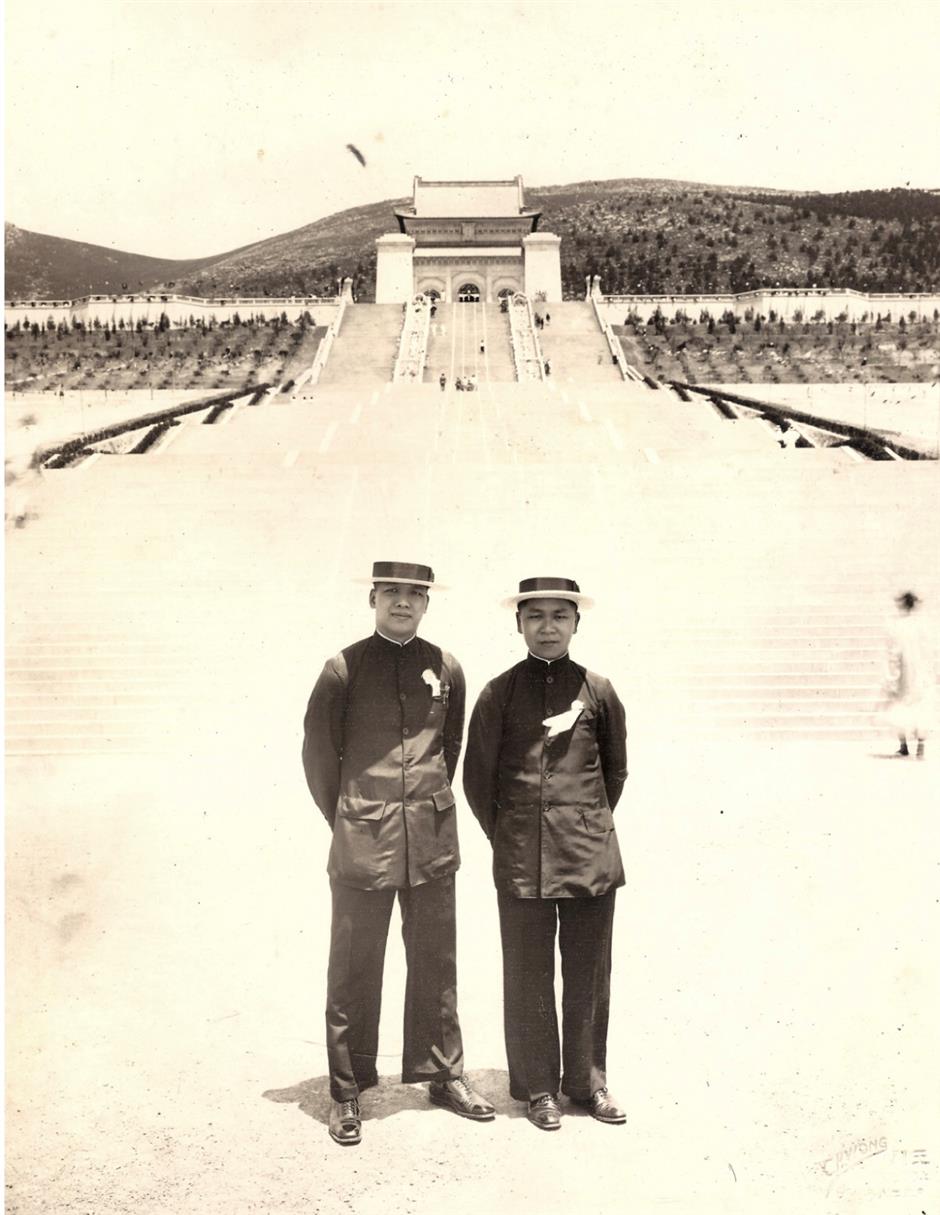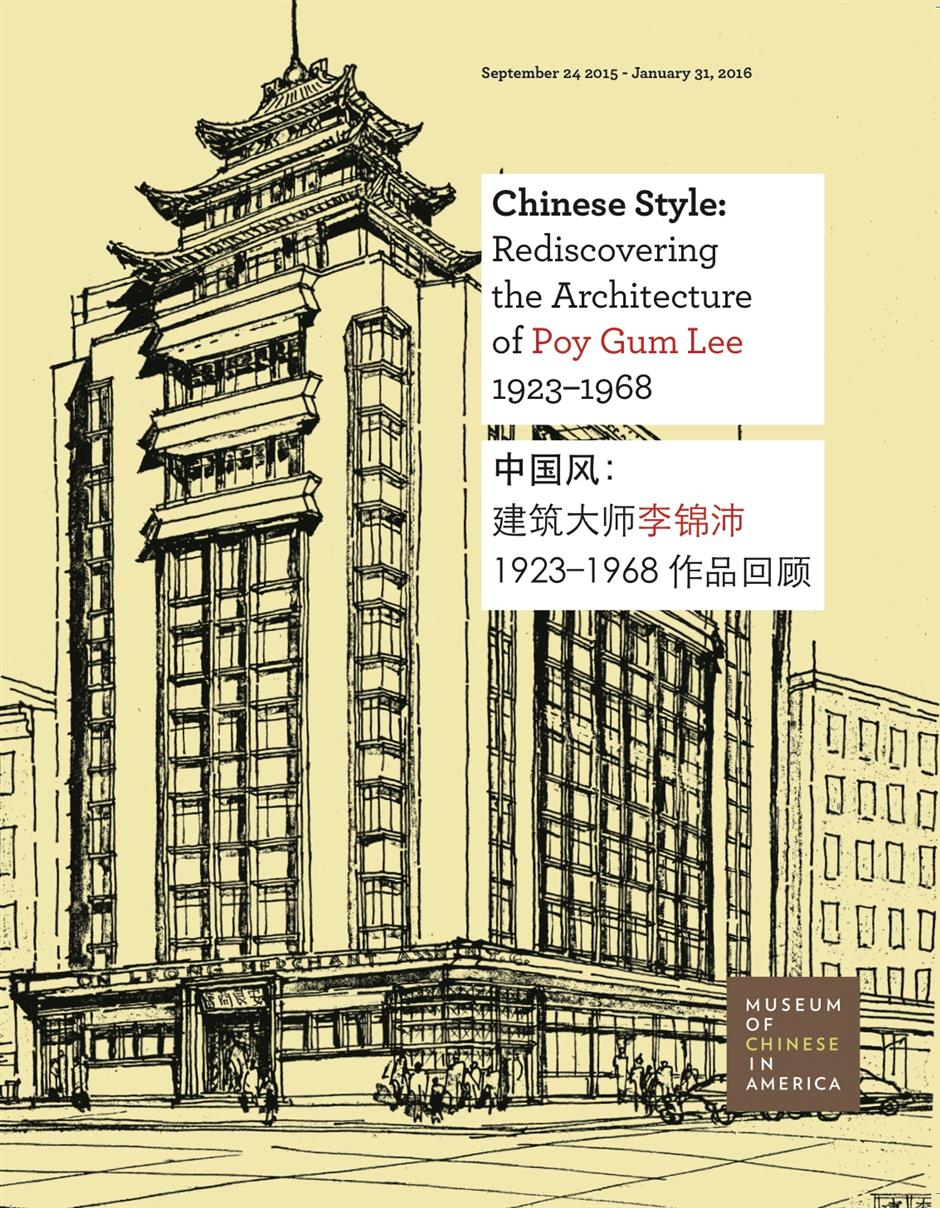Shanghai's 1931 YMCA marked China's architectural renaissance
In 1931, the Chinese YMCA Building was regarded “a first successful attempt in which Chinese architecture is incorporated into modern structure.” Today, it still stands tall, as a boutique hotel, with blue glazed tiles glistening in the heart of Shanghai.
“With the exception of pagodas, old Chinese buildings, most of which were made of wood, rarely have more than two floors,” says Tongji University Professor Qian Zonghao.
“But starting from the late 1920s, the Chinese government began to call upon Chinese to revive traditional culture, and Chinese architects applied their Western knowledge to design taller buildings with traditional elements. We call it ‘Chinese Renaissance Style’.”

The nine-story Chinese YMCA Building was regarded "a first successful attempt in which Chinese architecture is incorporated in high structure" in 1931.

Chinese YMCA now rents out most of the building to the Jinjiang Metropolo Hotel Classiq, a boutique hotel.
Harmony of East and West
When “the new $1 million Chinese YMCA building” was nearing completion in the August of 1931, the China Press called it “a harmonious composite of East and West” and “one of the most modern of its type in the Far East.”
“The lower level forming the base of the building is constructed of precast artificial stone ashlars, the upper part being faced with Taishan red face bricks and the top story treated with the effect of pillars and beams, latticed window work and the usual Chinese roof of glazed temple tiles,” the report said.
The nine-story building was erected as the new edifice for the Chinese Young Men’s Christian Association. The history of the YMCA dates back to 1844 when Englishman George Williams founded the international organization.
The YMCA in Shanghai was established in 1900 by a galaxy of Chinese elites and sponsors, including diplomat Yan Huiqing and prominent businessman Charlie Soong, father of the famous Soong sisters.
Although an institution with a religious background, the YMCA was not engaged in preaching religion but carried out various activities focusing on young people. The new building hosted numerous lectures, concerts, drama performances, art exhibitions and sports activities. Many celebrities including famous Chinese writer Lu Xun hosted talks here.
During China’s War of Resistance Against Japanese Aggression (1931-45), Chinese intellectuals initiated “Tuesday dining party” in the restaurant hall of the building.
These functions, in the name of dining parties, were informal forums that united people to engage in the underground fight against Japanese aggression.
Among the speakers were famous US correspondents Anna Louise Strong and Edgar Snow. The Chinese translation of Snow’s “Red Star over China,” an influential account of the Chinese revolution, was published with the support of “Tuesday dining party” members.
After 1949, the building became the state-owned Huaihai Hotel, but ownership was handed back to the YMCA in 1978, which still has an office inside but rents out most of the building to the Jinjiang Metropolo Hotel Classiq, a boutique hotel.
“The Chinese YMCA resumed its function in 1984 and is more of an organization today for social services,” says Ma Zhaozhen, director of YMCA Shanghai.
“We provide services ranging from education to culture, sports and day care in more than 10 community centers across the city. Every year, 3 million people ─ from children to youngsters and the elderly ─ benefit from YMCA services and activities, more or less changing their lives.”

Most of the historic features in the building have been well preserved, from the tastefully decorated beamed ceilings to stone staircases and latticed window work.

Talented Chinese trio
Today, most of historical features are well-preserved. Walking through the stone-arched gate of the hotel is like entering a small Chinese palace. Most rooms are decorated in Chinese style, with tastefully decorated beamed ceilings that are set off with wood-panelled walls, retaining it’s original style.
“The composition shows a pleasant nicety of proportion of the Western order and yet every detail in the essential features and ornamentations is worked out strictly in accordance with the Chinese style of good taste,” a journalist for the China Press wrote in 1931.
“It can be safely said that this building is one of the first, if not the only, successful attempts to create a modern tall building in the Chinese architectural style and to prove that this style of architecture has become not only a study of archaeology but a living style of architecture.”
The building was designed by a trio of US-trained Chinese architects ─ Poy Gum Lee, Fan Wenzhao and Zhao Shen ─ says Tongji University Associate Professor Qian Feng.
Fan and Zhao, both graduates from the University of Pennsylvania, also co-designed Nanking Theatre which is today the Shanghai Concert Hall (P8-9, Shanghai Daily, April 14).
“Unlike them, Lee was born in New York in 1900 and studied architecture in Price College, MIT, Columbia University and won a diploma from New York State University,” says Qian.
Before coming to Shanghai as a YMCA architect in 1923, Lee had worked in the New York office of American architect Henry Murphy, a foremost architectural proponent of the incorporation of Chinese architectural elements into modern construction.
“Familiar with Murphy’s manners and treatments, Lee later used the new style extensively in his China projects including the Chinese YMCA Building,” Qian says.
Although born and educated in the US, Lee’s architectural education in several renowned American universities coincided with the emergence of this modern Chinese style.
A year after the Chinese YMCA Building was completed in 1931, he adapted Chinese architectural elements and motifs to the eight-story bureau for the National Committee of the Young Women’s Christian Association of China which still stands on Yuanmingyuan Road near the Bund.
Qian notes that besides a rainbow of YMCA buildings across China, this prolific architect also took over the work for constructing Dr Sun Yat-sen’s Mausoleum in Nanjing, capital of Jiangsu Province, a typical example of Chinese renaissance style, after chief architect Lu Yanzhi suddenly died of disease in 1929.

As a typical structure in Chinese renaissance style, the building features dougong (traditional Chinese bracket) and blue glazed tiles.

Poy Gum Lee (left) poses in this archive photo with a colleague fronting the grand Mausoleum of Dr Sun Yat-sen.

Poy Gum Lee's another work, the YWCA building at 133 Yuanmingyuan Road, is also in the Chinese renaissance style.
Lee, Lu, Fan and Zhao had all worked in Murphy’s office in New York. They were regarded as modern China’s first generation of architects, since building in China traditionally adhered to regional traditions, and architecture did not then exist as a profession.
During the first decades of the 20th century, many young Chinese were sent abroad to America and Europe and later brought back skills to help modernize China.
“Like Fan, Zhao and other Chinese architects, Lee later turned to more modern style, and a noteworthy work is the Cosmopolitan Apartments, a simply cut Spanish-style building with Art Deco details hidden in a lane of Nanjing Road W.,” Qian says.
However, Lee’s successful career in China was cut short by the Japanese invasion, and in 1945 he repatriated to design projects in New York’s Chinatown where he was born and grew up. This time he brought architectural modernism from China to New York and became the first Chinese-American architect to design for clients in Chinatown.
To commemorate Lee who bridged two cultures, the Museum of Chinese in America in New York hosted an exhibition titled “Chinese Style, Rediscovering the Architecture of Poy Gum Lee 1923-1968” in 2015.
The exhibition displayed a photo of Lee with a colleague fronting the grand Mausoleum of Dr Sun Yat-sen and his drawings of Chinatown projects. Most of these buildings featured big roofs and colorful paintings that resembled the blue-tiled hotel in the heart of Shanghai.
About the building
Yesterday: YMCA Building
Today: Jinjiang Metropolo Hotel Classiq
Address: 123 Xizang Rd S.
Architects: Fan Wenzhao, Zhao Shen and Poy Gum Lee
Architectural style: Chinese Renaissance
Date of completion: 1931
Tips: The hotel has a mini exhibition featuring archive photos of the building’s rich history near the lobby. Poy Gum Lee’s other works in the Chinese renaissance style and the YWCA building at 133 Yuanmingyuan Road are also worth a visit. Both buildings are well-preserved and feature amazingly beautiful interiors.

The Museum of Chinese in America in New York hosted an exhibition titled “Chinese Style, Rediscovering the Architecture of Poy Gum Lee 1923-1968” in 2015.
The landmark building that made a mark on Chinese design
Fan Wenzhao, one of the three architects who designed the Chinese YMCA Building in Shanghai traced the history of Chinese architecture and talked about China’s architectural renaissance in an address in 1931 when the building was nearing completion:
“Briefly tracing the history, principles and peculiar features of Chinese architecture and comparing it with the West and outlining the principles and peculiar features of the former, the noted Chinese architect, winner of several prizes and founder of the Chinese Architects’ Society delivered his speech with lantern illustrations at the meeting presided over by (American missionary and YMCA official) George A. Fitch at the Foreign YMCA.”
In comparing Chinese architecture with that of the West, Mr Robert Fan told his audience that the Chinese were never military people except perhaps during the reign of the Yuan Emperor Kublai Kahn and consequently there are no triumphal arches and war memorials like those in other countries.
He also said the Chinese people as a whole had little religious zeal, and therefore China has no great temples like the great and magnificent cathedrals and churches in Europe.
In this respect, he further pointed to the fact that Chinese artists and architects in the old order were by profession scholars and poets who took up the study of art as means for personal experiment and expression whereas in Europe during the Middle Ages artists were looked upon as superior and men of great importance and were given high honor by great patrons of art like the Medici in Italy.
About 214 BC, the most famous of Chinese building undertakings, the Great Wall, was built by Emperor Qin Shi Huang. It is 1,140 miles (1,824 kilometers) long. The Tang Dynasty (AD 618-907) and Song Dynasty (960-1279) figured as the flourishing stages of Chinese architecture with emperors as great patrons.

An archive photo of the landmark Chinese YMCA Building
Mr Fan pointed out that almost always Chinese houses and especially palaces have their walls on the north, west and east only leaving the south for their front doors.
In grouping houses a strict balance is always desired. In point of sincerity there is no false idea of construction — each element in the structure has its structural value and decoration and is a matter of inspired utility.
The subtlety of the curve is more effectively preserved in the Northern style than in the south where it has been developed into too fantastic a form. Human and animal figures used for decorative purposes have religious values in as much as they are regarded as protecting spirits against evil demons.
The speaker attached paramount importance to the Chinese architectural renaissance: He pointed to the fact that in the past in China, artists had been comparing the East with the West in the light of a struggle between efficiency and beauty.
Recently, however, he explained there has appeared on the stage a new but small group of men who seek to bring about a synthesis of the best in both.
They are the architects in modern China who are beginning to make their feeble efforts felt in fighting against the ugly imitations of Western Architecture and endeavoring to introduce the modern conveniences and comforts into buildings that can still retain the old beauty of China.
─ Excerpt from the China Press (May 13, 1931)

The China Press called the new Chinese YMCA Building “a harmonious composite of East and West.“

The building was described as “one of the most modern of its type in the Far East."
















